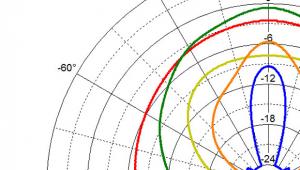Review: Job 225 stereo amplifier Page 2
Performance
Connected to the pair of Thiel CS1.7s, the 225 sounded … well, just fine. Putting it into the system didn't produce any immediate sonic revelations to speak of. I did note that the 225 did a superb job of controlling the Thiel's woofer, keeping the bass maybe even a shade tighter than the Krell amp did, and easily driving the CS1.7's woofer to the point of pain when I cranked up ZZ Top's La Futura. Considering that the CS1.7 has a 4-ohm nominal impedance and a 2.6-ohm minimum impedance, that's fairly impressive. Still, though, the difference I heard in casual use wasn't dramatic.
It wasn't until I started to do direct A/B comparisons with the Krell's internal amp that I got a real sense of what the 225 could do.
For sussing out subtle differences between two pieces of audio gear, I often rely on L.A. saxophonist Terry Landry's Amazonas (hear a few cuts here). Amazonas was recorded in Direct Stream Digital (DSD) by audiophile producer Joe Harley and tweaked up by mastering guru Bernie Grundman-and best of all, I was there for the recording and mastering sessions so I have some inkling of the way it's supposed to sound.
With the Job 225 replacing the Krell's internal amp, Amazonas simply sounded more lifelike, more like what I remember hearing in the studio. Instruments were spread smoothly across the stereo soundstage, sounding more like real instruments in a room instead of like a bunch of instruments steered around the soundstage with pan knobs. Amazonas used a combination of direct and ambient miking, so some of the "pan-pot" effect is inevitable, but still, the 225 gave a more realistic sense of ambience. This happened with the instruments, too-the muted trumpet in the background of the title track sounded more fully embodied, more like a live instrument. The cymbals had a lot more of that natural, airy, unmistakable sound you hear when you're in the room as the stick hits the brass.
"Words We Never Use" from singer/songwriter Ron Sexsmith's debut album also dazzled through the 225. Sexsmith's voice still showed its trademark coarseness, but it sounded a little clearer and less "electronic." I also heard more detail in the soundstage, i.e., a more complex rendering of the way the sound of the percussion instruments bounced off the studio walls or flowed through the reverb processor or both. I think this is what audio reviewers are referring to when they talk about "inner detail"-which I've always thought could be expressed just as well, and less confusingly, as simply "detail."
The 225's amped-up ambience inspired me to play Toto's "Rosanna," the best choice I've found to "light up" every part of the audio spectrum. This dense recording gave the 225 plenty of chance to work its magic. The soundstage was wider and more detailed. The piano lost some of its electronic edge and started to sound more like the real thing. The bass and kick drum sounded just a bit tighter.
In short, I was hearing a really good amp.
Measurements
Like I said, I don't review amps on a regular basis, but I do own two audio analyzers that can perform amp measurements. So I thought I'd run a couple of quick sweeps on the 225 to get an idea of whether or not it lives up to Goldmund's claims. I used a Clio FW analyzer for these tests. You can see the results in the charts on this page. Note that the power measurements are with just one channel driven; I didn't have enough load resistors on hand to do both channels.
The frequency response measurement suggests even greater bandwidth than the manufacturer claims. The official spec is ±0.5 dB from 10 Hz to 100 kHz. My measurement indicated +0.05 dB/-0.11 dB from 10 Hz to 88 kHz (Clio's measurement limit), down just -0.05 at 80 kHz.
Output at 8 ohms is far beyond the 125-watt spec: 194 watts at 0.5% THD, 201 watts at 1.0% THD. Into 4 ohms, it's not as impressive. While the manufacturer doesn't specify power at 4 ohms, we typically expect a high-end amplifier to double its power (or come close) into 4 ohms. The 4-ohm numbers I got with the 225 are 218 watts at 0.5% THD, 227 watts at 1.0% THD.
Bottom Line
The Job 225 seems to break beyond the limits of the "affordable high-end amp" to deliver a sound quality more like that of the $5,000-and-up amps I've tried. No, it's nothing to look at, nothing you can brag about, but it does deliver superbly smooth sound from a chassis that seems almost impossibly small. So should you get a Job? If you're looking for a compact, reasonably affordable, high-end amp, then yeah.





























































